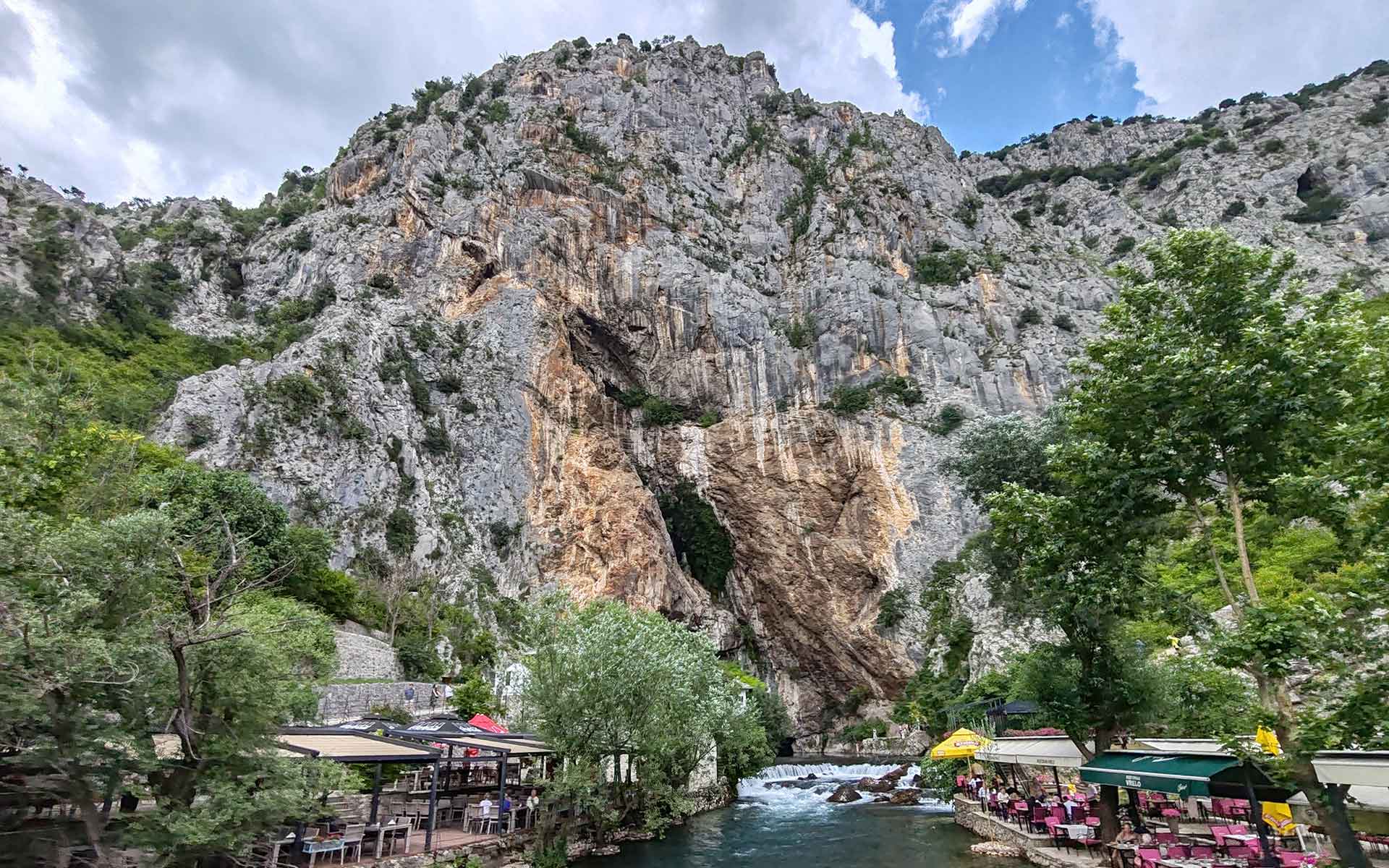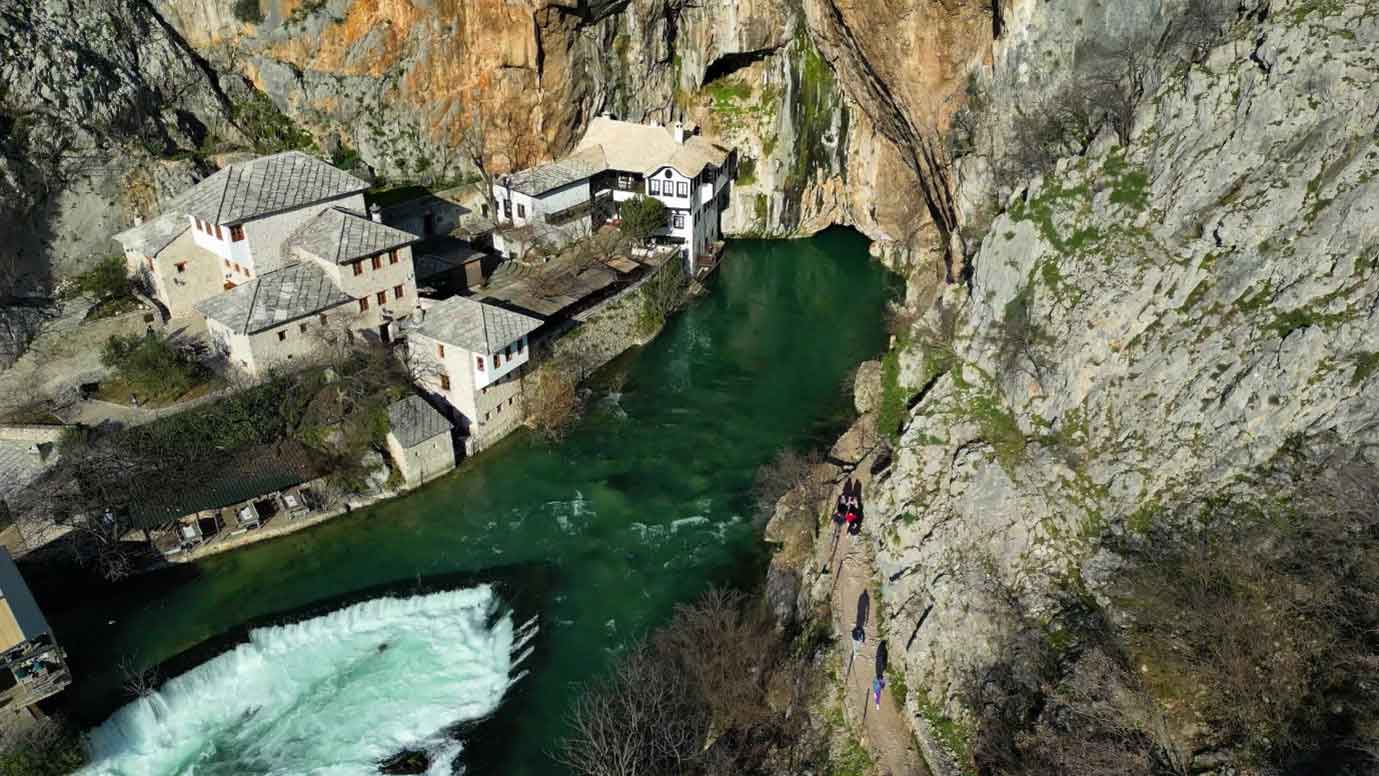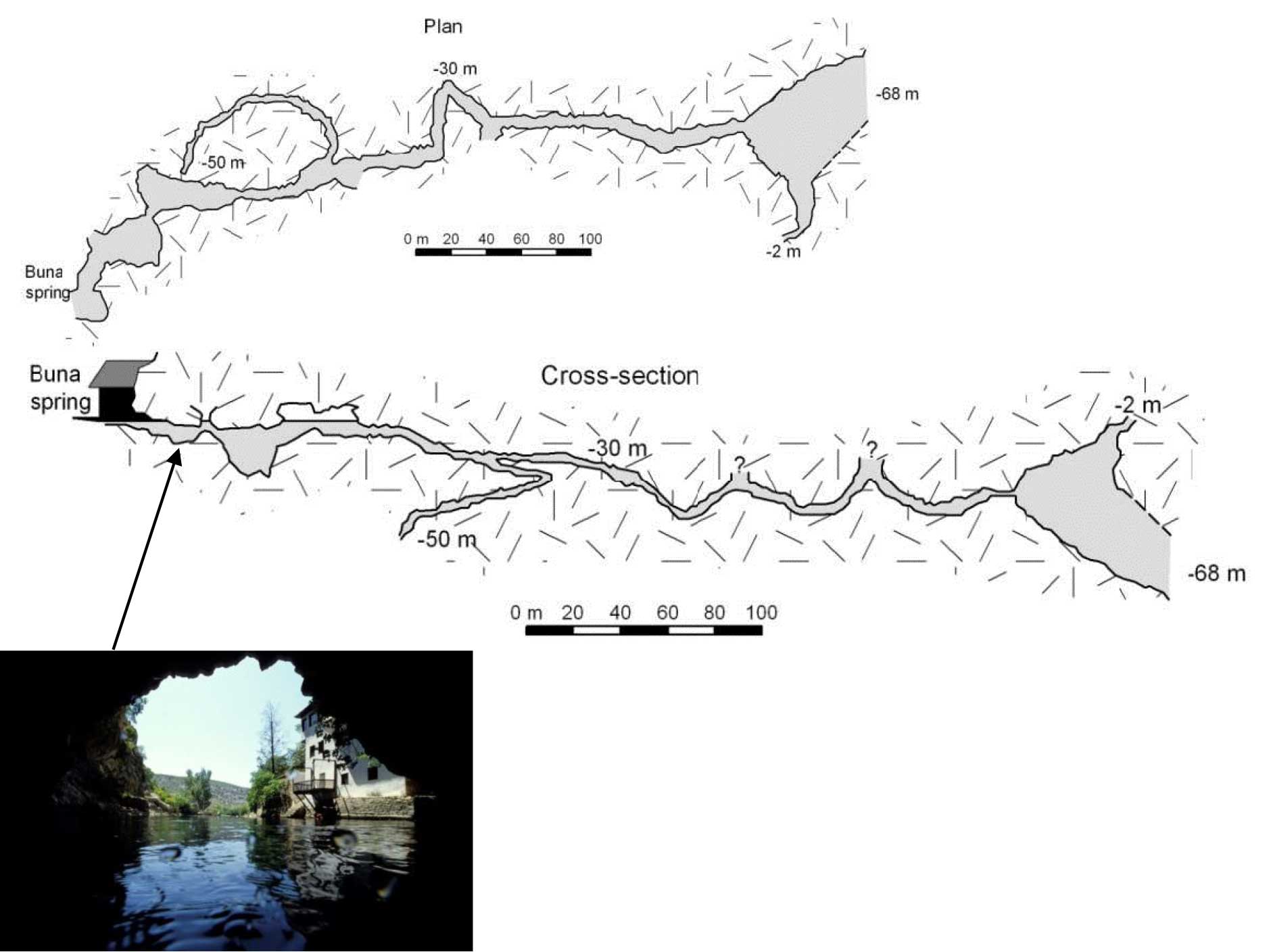
Buna spring in Blagaj, Mostar (Bosnia & Herzegovina). Photo by Branislav Petrovic.
Geological Period
Neogene to Quaternary
Main geological interest
Geomorphology and active geological processes
Location
Neretva River valley in Blagaj, downstream of the city of Mostar, Bosnia and Herzegovina
43°15’25”N, 017°54’15”E
Buna spring in Blagaj, Mostar (Bosnia & Herzegovina). Photo by Branislav Petrovic.
Deep siphonal spring with enormous maximal discharge.
The tectonic role is crucial for the creation of impressive karst landscapes. Due to its maximal discharge (Ford and Williams, 2007), Vrelo Bune is listed among the world’s top five springs. Its minimal discharge is 3 m3/s, the average is 23.7 m3/s, while the maximum reaches 120 m3/s. In January 1971, all of 380 m3/s have been recorded at Buna River. The first divers to explore the spring’s siphons in 1973 were G. Franczia-Kiss and C. Touloumdjian. A series of expeditions continued in 1984, 1999 and 2003. During high discharges, the visibility in the water is not good (2-4 meters). The water temperature is 10-11 °C.
- Geological description
The Vrelo Bune spring is located on the left border of the Neretva River valley in Bosnia and Herzegovina at the altitude of 36 meters. The spring outlet is situated at the point of tectonic contact between Cretaceous limestone and Eocene flysch. Water discharges from the cave underneath a high cliff make the ambience unique and quite spectacular (Stevanovic, 2009). The smaller cave openings, situated along the fault at the cliff, were created at the earlier stages of karst evolution (Milanovic et al., 2014). Buna is an ascending siphonal spring. The total length of the deep siphons that were explored by divers is 520 meters, and the vertical distance between the deepest explored point and the discharge point is 72 meters (Touloumdjian, 2005). The total estimated catchment area of the Buna spring is approximately 1,100 km2, including the Nevesinjsko Polje, the catchment of the Zalomka River, and the broad area of the Velež Mountain at the elevation above 900 meters (Milanovic, 2023). It is difficult to distinguish the watersheds of the neighbouring catchment of the Bunica spring (discharges from 0.72-207 m3/s), and it is common to view these two catchments as a single karst system. Apparent groundwater velocity, as observed during the tracing tests, ranges between 0.03 and 0.04 m/s.
- Scientific research and tradition
The Buna spring is a wonderful example of a fascinating spring and a developed karst system with tectonics that are actively shaping the landscape. It is visited by many tourists. Next to the spring is a tekke house from the Ottoman period. The spring is protected as a natural monument and with tekke represents a unique ambiance with a significant cultural, social and economic significance.
- Reference
Ford, D. and Williams, P.W. (2007) Karst Hydrogeology and Geomorphology. Wiley.
Milanović, P. (2023) Karst of East Herzegovina and Dubrovnik Littoral. Springer. Available at: https://link.springer.com/book/10.1007/978-3-031-28120-4.
Milanović, P., Stevanović, Z. and Čokorilo Ilić, M. (eds) (2014) ‘Field Trip Guide’, in. DIKTAS International conference „Karst Without Boundaries” and the International course and seminar „Characterization and Engineering of Karst Aquifers”, Trebinje, p. 69.
Stevanović, Z. (2010) ‘Major springs of southeastern Europe and their Utilization’, in N. Kresic and Z. Stevanović (eds) Groundwater Hydrology of Springs. Boston: Butterworth-Heinemann, pp. 389–410. Available at: https://doi.org/10.1016/B978-1-85617-502-9.00010-4.
Touloumdjian, C. (2005) ‘The Springs of Montenegro and Dinaric karst’, in Z. Stevanović and P. Milanović (eds) Proceedings of the IAH International conference KARST 2005. University of Belgrade, Institute of Hydrogeology, Belgrade: Nat.Com. of the IAH Serb.& Monten., pp. 443–458.
- Author(s)
Zoran Stevanovic.
(Past-Chair)The Karst Commission of the International Association of Hydrogeologists, Univ. Belgrade. Servia.
Petar Milanovic.
The Karst Commission of the International Association of Hydrogeologists.
Ferid Skopljak.
Federal Geological Survey, Sarajevo, Bosnia & Herzegovina.


